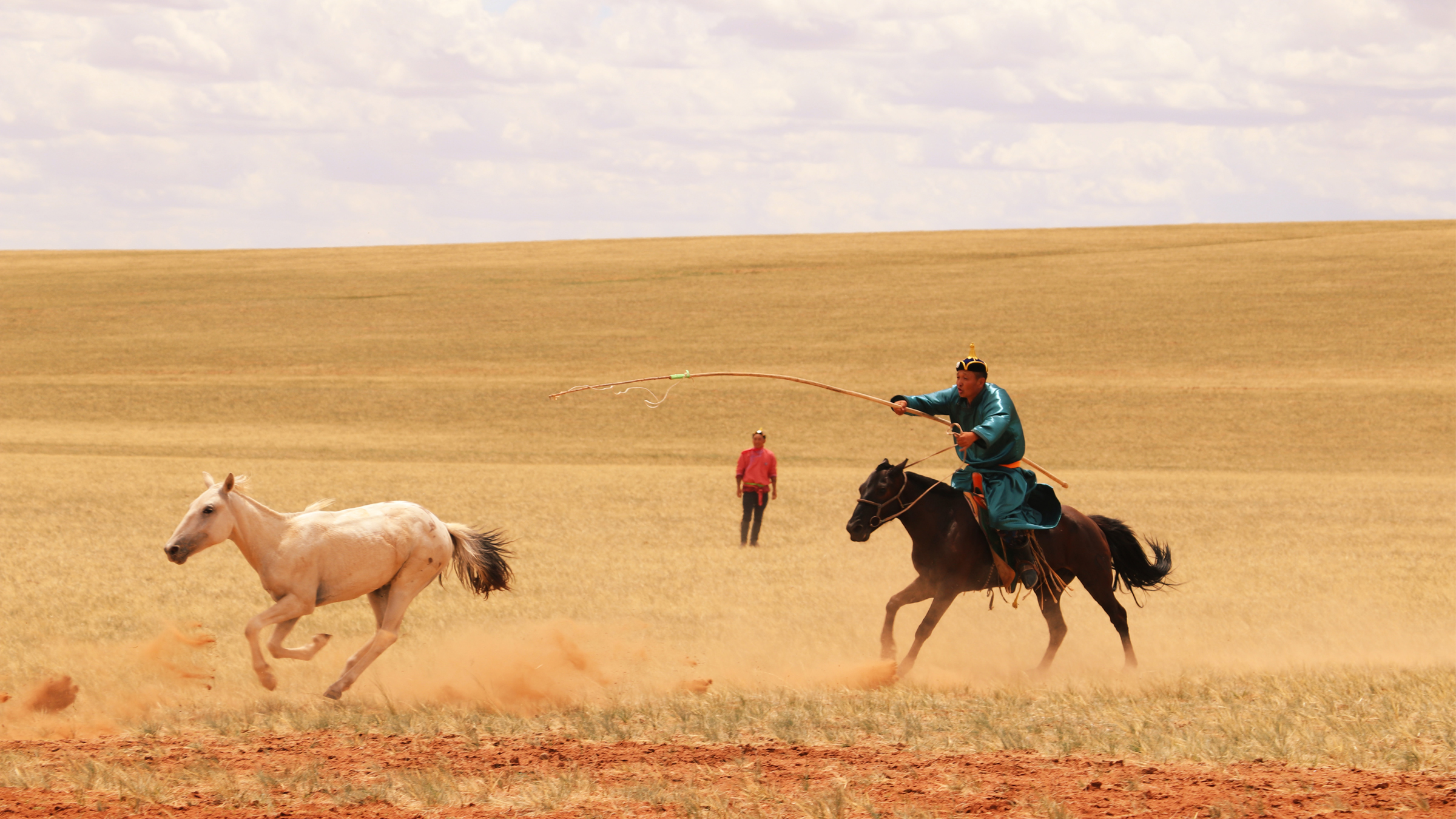Humans didn't domesticate horses until 4,200 years ago — a millennium later than thought
Ancient DNA of nearly 500 horses reveals that humans didn't domesticate them until 2200 B.C., 1,000 years later than we previously thought.

Humans domesticated horses 1,000 years later than previously thought, first for access to their meat and milk and then for their transportation capabilities, a new study of ancient horse DNA suggests.
The genetic analysis reveals a date around 2200 B.C. for the domestication of modern horses, forcing scholars to rethink how both horses and humans expanded into Central Europe millennia ago.
Horses helped revolutionize human history due to their long-distance stamina, their ability to move heavy loads, and their support of riders, allowing humans to spread quickly around the world, bringing food and gear with them and fighting with weapons while mounted on horseback. Research into human skeletons from the Yamnaya culture in 2023 placed the timing of this revolution sometime between 3300 and 3000 B.C. when these semi-nomadic people moved across Europe and western Asia, bringing their Indo-European language with them.
But a new analysis of 475 ancient horse genomes refutes the idea that large horse herds accompanied the migration of people across Europe thousands of years ago. In a study published Thursday (June 6) in the journal Nature, a team of researchers identified distinct changes in the genetics of domesticated horses that point instead to a date around 2200 B.C., a millennium later than was previously assumed.
In examining the horse DNA, the team attempted to identify evidence of husbandry, or the human-directed management of horse herds, including sharp declines in genetic diversity and shorter times between generations.
The researchers discovered that the horse genome was local to Central Europe and the Carpathian and Transylvanian Basins until the end of the third millennium B.C., well after the Yamnaya expansion. Additionally, the time between horse generations declined considerably around 4,200 years ago, suggesting breeders were trying to produce more animals.

The genetic study also showed that a new bloodline — which matches that of modern domesticated horses — arose around 2200 B.C., corresponding well with archaeological evidence of horse imagery in Mesopotamia and chariot burials in the Ural Mountains.
Sign up for the Live Science daily newsletter now
Get the world’s most fascinating discoveries delivered straight to your inbox.
Related: Why do horses wear shoes?
"It seems that the first domestication was motivated by accessing meat and milk in some Central Asian settled hunter-gathering group," study co-author Ludovic Orlando, a molecular archaeologist at the Centre for Anthropobiology and Genomics of Toulouse in France, told Live Science in an email. But these people, who lived in what is now Kazakhstan, were not using horses for transport.
"In contrast, the other groups domesticating the horse 4,200 years ago were incentivized by mobility," Orlando said, "since their horse bloodline expanded like no other before and since."

The trigger for this domestication event, according to Orlando, may have been a climate event that led to dry seasons in southwest Asia and the steppes, as horses could have helped people survive by enabling them to move quickly to new pasture areas.
William Taylor, an archaeozoologist at the University of Colorado Boulder who was not involved in the study, told Live Science in an email that this research shows "pretty conclusively that while the Yamnaya and other early cultures of the western steppes may have had a relationship with wild horses, they had little to do with the first domestication of the horse." The new study's genetic model "converges with other lines of direct evidence quite neatly," Taylor said.
Shevan Wilkin, a biomolecular archaeologist at the University of Basel in Switzerland who was not involved in the study, told Live Science in an email that, although her previous work identified Yamnaya individuals consuming horse milk, this "likely represented an early attempt at horse domestication in the region." Wilkin said that the new study suggests "it is less and less possible that the Yamnaya used horses for their mass migrations across the steppe."
While it remains somewhat a mystery why humans did not domesticate horses until well after other animals, like dogs, sheep, cattle, and even donkeys, once they did, humans were very soon taking horses with them almost everywhere they went.
"This relatively later horse expansion," Orlando said, "was clearly driven by people, since such an expansion was unprecedented in our dataset, which covers 50,000 years."

Kristina Killgrove is a staff writer at Live Science with a focus on archaeology and paleoanthropology news. Her articles have also appeared in venues such as Forbes, Smithsonian, and Mental Floss. Killgrove holds postgraduate degrees in anthropology and classical archaeology and was formerly a university professor and researcher. She has received awards from the Society for American Archaeology and the American Anthropological Association for her science writing.









